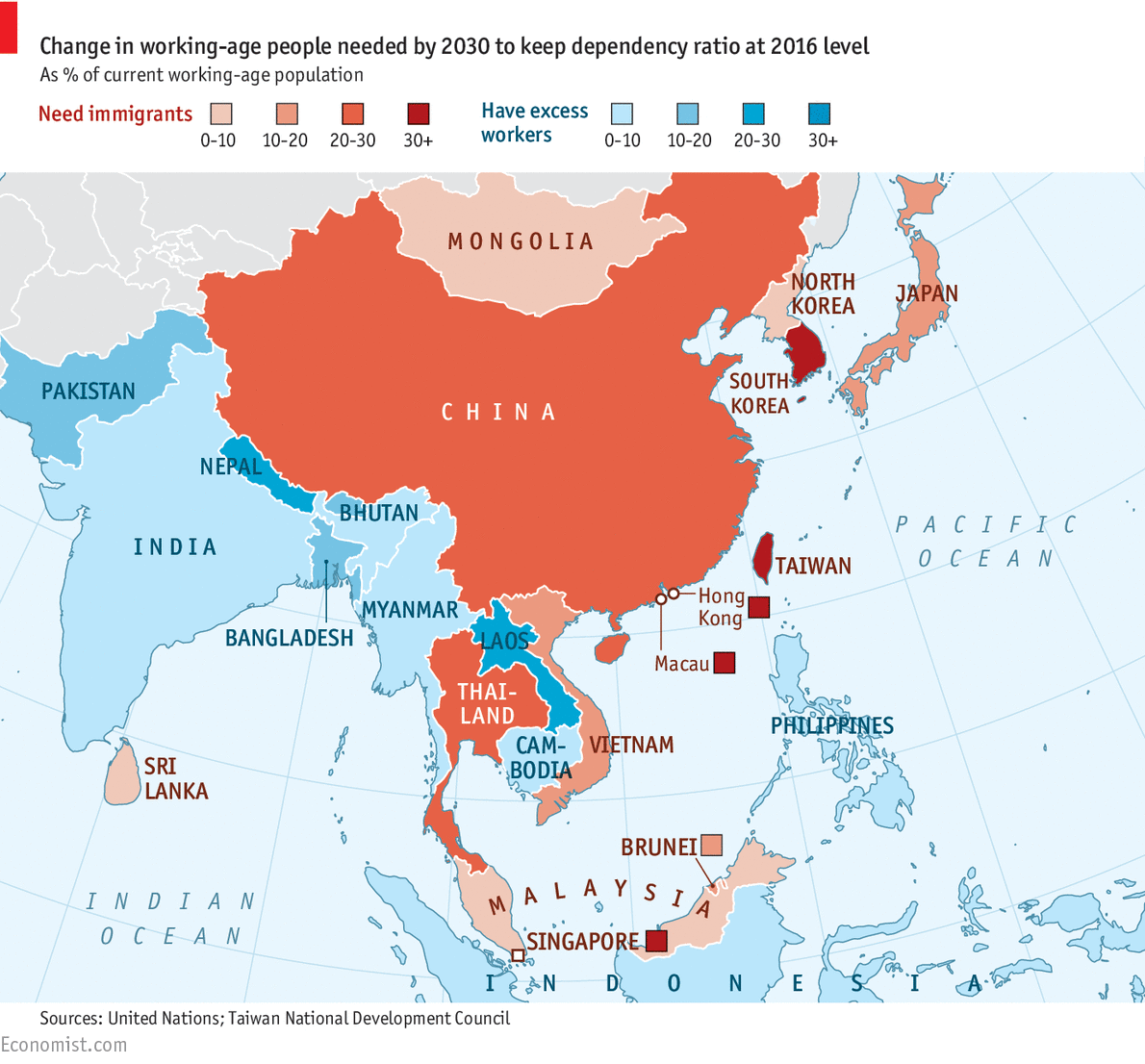Where workers will be needed in the region, and where they could come from
by The Data Team, ‘The Economist,’ London, February 10, 2017

The imbalance of workers will only grow more dire as populations get greyer. For now, China is still a net exporter of labour. But during the next 30 years its working-age population is set to shrink by 180m, and it will need 20m more domestic workers. Overall, East Asia would have to import 275m people between the ages of 15 and 64 by 2030 to keep the share of its population at working age steady. Singapore, Malaysia, Vietnam and especially Thailand need workers, while Myanmar, Indonesia and the Philippines have too many. South Asia, meanwhile, could afford to lose 134m labourers—India alone could send more than 80m abroad—without worsening its dependency ratio. China’s projected shortfall in 2030 is equivalent to 24% of its current working-age population; in Bangladesh the likely surplus is 18%.
Immigration may have a triple benefit for Asia’s ageing societies. A study of the United States showed that immigrant inflows both lower the cost of child care and modestly increase fertility rates among native women with college degrees. Foreign workers add to the labour force themselves, help native women take fuller part in it, and help them bear the workers of tomorrow. It is a pity that Asia does not make more use of them.
Read full article here.